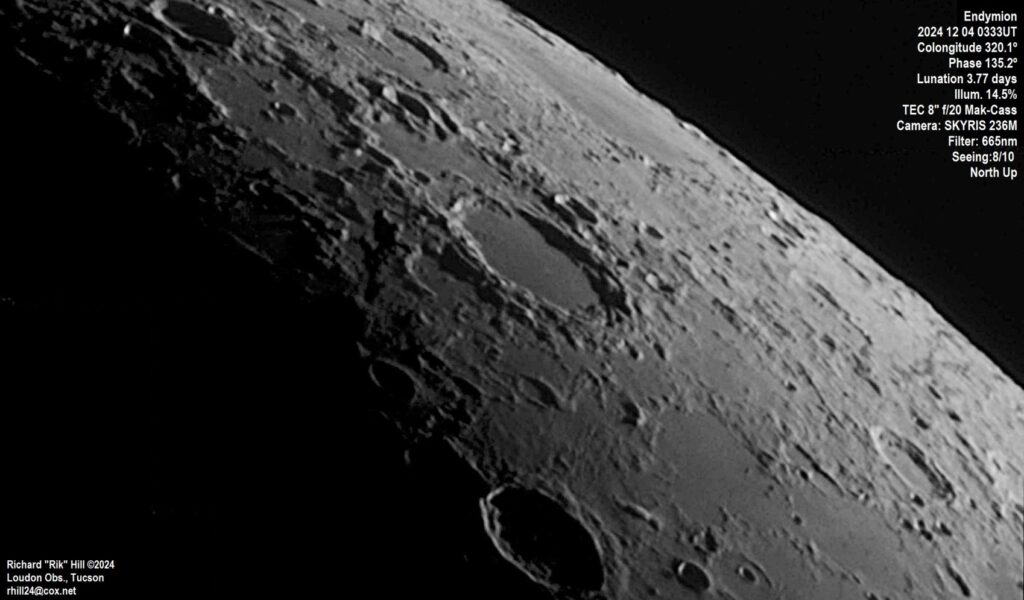Only 3-4 days after new moon, a day before Atlas and Hercules are in full sunlight, you will see a prominent dark oval in the extreme NE (lunar) of the crescent moon. This is the 160km diameter crater Endymion formed during the Nectarian period (around 3.9 billion years ago). The floor looks featureless and smooth but there are three equal sized, ~2km dia. craters in a line in the upper left of the crater just barely discernable here. The shadow filled crater at the bottom of the image is Atlas. Between Atlas and Endymion and to the right is a flat mare region, Lacus Temporis that is Pre-Nectarian (as old as 4.5 b.y.) a truly ancient lake!
Above and to the right of Endymion are the remnants of a once great walled plain De La Rue (136km) with a small crater De La Rue J (14km) in the center. On the north wall of this crater is the mostly shadow filled Strabo (55km) on the upper edge of this image.
A line drawn from Atlas, through Endymion leads to another flat region, much larger than Lacus Temporis, this is Mare Humboldtianum (250km). Its extent can be seen varying depending on the libration the night you are observing. This basin is also Nectarian in age with much of the contained material being younger, of Upper Imbrian age (3.4-3.7 b.y.). The Lunar Prospector noted a mascon in the center of the Mare where there was higher gravity due to the greater mass of this Imbrian material. Look for a libration where this is tipped toward you for a good view.

